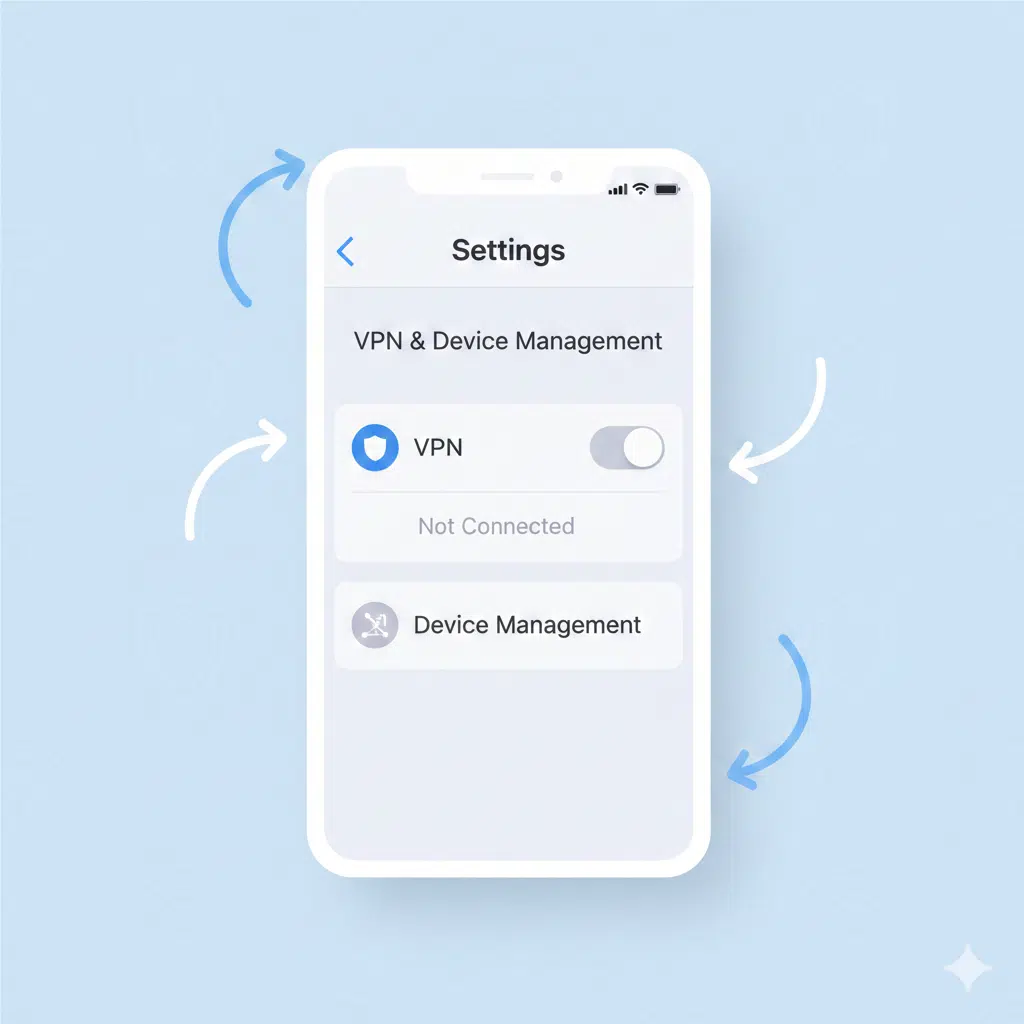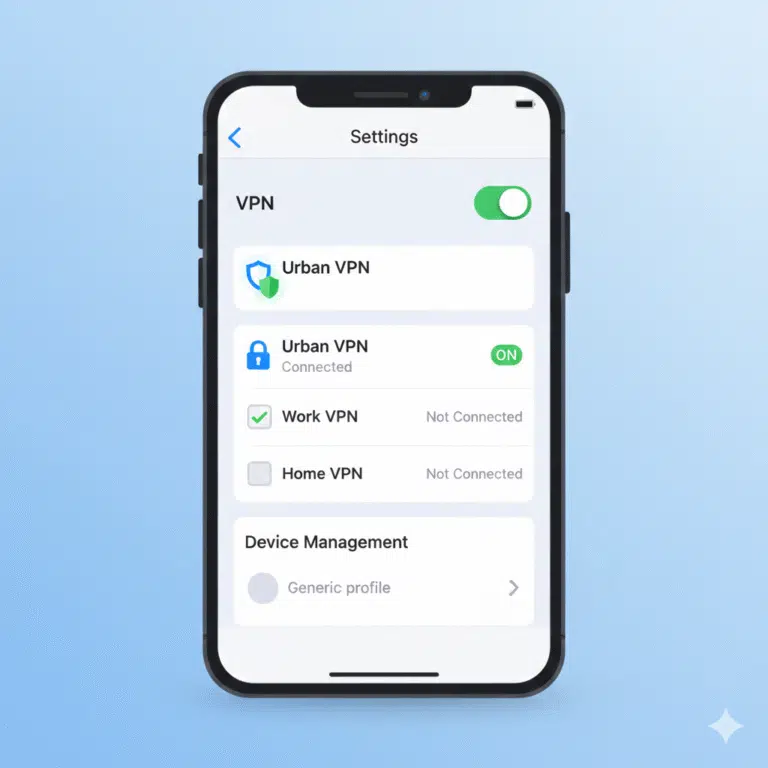Understanding how to manage VPN behavior on iOS is essential for network administrators and cybersecurity teams. This guide explains How To Turn Vpn Off On Iphone with technical precision, ensuring IT professionals can support end users while maintaining compliance with organizational security policies.
How do you turn off VPN on iPhone from the main Settings menu?
The most direct method is through the primary Settings panel. iOS routes all VPN configurations—manual, IKEv2, Cisco IPSec, and app-based tunnels—through the system-level toggle.
Navigate to Settings → VPN (or Settings → General → VPN & Device Management → VPN) and disable the active connection. This disables the system’s VPN interface and tears down the tunneled route immediately (source: Wikipedia).
In e
Ho
Most commercial VPN apps—NordVPN, Surfshark, ProtonVPN, and others—control tunnel behavior internally. If the system toggle automatically reconnects, it typically means the app enforces “auto-connect” or “kill switch” policies.
Open the relevant VPN app, disable auto-connect, then tap “Disconnect.” This allows the system-level VPN interface to remain off. For users who run multiple VPN or proxy tools, cross-app configuration conflicts often surface; in those cases, removing unused profiles fully resolves the issue.
For additional context on managing app-driven tunnels, see how binding VPN configurations works in qBittorrent environments using similar routing logic: how to bind qbittorrent to vpn.
Why does the VPN turn back on automatically after being disabled?
Auto-r
- An MDM profile en
- A security application uses a “secure tunnel enforcement” feature
- The VPN app’s kill switch interprets non-VPN traffic as unsafe
- Per-app VPN rules require certain managed apps to remain routed through a tunnel
For corporate deployments using IKEv2 Always-On, Apple’s device supervision forces the VPN to remain connected unless an administrator removes or edits the configuration. IT staff should review the active configuration profile in VPN & Device Management.
Further reading on tunneling enforcement patterns is available via Cloudflare’s VPN learning hub (source: cloudflare.com/learning).
How do you fully remove a VPN configuration from iOS?
If the goal is not just disabling the tunnel but removing it entirely, users can delete the VPN profile:
- Open Settings → General → VPN & Device Management
- Se
- Tap Delete VPN
Deleting removes IKEv2 certificates, IPSec shared secrets, or imported .mobileconfig payloads associated with enterprise deployments. App-based VPNs may require both deleting the profile and uninstalling the app to prevent background services from recreating the configuration.
Constraints and performance:
Testing VPN disablement varies depending on:
- Carrier restrictions: Some carriers enforce private relay or APN-level security policies.
- Device age: Older iPhones (iPhone 7/8) may retain profile remnants after OS updates, requiring manual cleanup.
- MDM policies: Supervised devices under Intune or Jamf may restrict profile removal entirely.
- ISP routing: Some ISPs apply CGNAT, making VPN reconnection more likely when the device attempts to re-establish stable routing paths.
- VPN ty IKEv2 supports fast reconnection by design (see RFC 7296), so users may see almost instant auto-connect if app-level policies remain active.
How do you verify that the VPN is fully turned off?
An IT-grade verification approach includes:
- Checking the VPN indicator in the iOS status bar
- Running DNS leak tests to confirm queries originate from the ISP’s resolver
- Validating the public IP using external services
- Confirming that the routing table no longer includes a tunnel interface
If the profile persists, iOS may silently route traffic back through the tunnel during app-triggered events. IT teams should advise users to confirm both app-level and system-level disconnects.
What should IT managers consider before advising users to turn off VPN?
Admins must balance user convenience with organizational security posture:
- Disabling VPN may expose corporate apps to insecure networks.
- Per-app VPN rules (common in Zero Trust designs) may break if the user disables the global VPN.
- Some regulatory frameworks—HIPAA, PCI, SOC 2—recommend continuous encrypted tunnels for remote access.
- iCloud Private Relay is not a VPN but may provide partial privacy; understanding this distinction is covered in depth in this related resource: is private relay a vpn.
Before authorizing VPN disablement, IT teams should review risk level, device role, and required compliance controls.
For a broader overview of VPN fundamentals, refer to TechRadar’s comparison guidelines (source: TechRadar).
How do you troubleshoot a VPN that won’t turn off?
Common enterprise-edge troubleshooting steps include:
- Removing or resetting MDM profiles
- Disabling kill switch or auto-connect features
- Checking for conflicting content-filter apps
- Reinstalling the VPN app to remove stale configuration files
- Resetting network settings (though this clears Wi-Fi and APN data)
If the VPN persists even after removal, the underlying issue is usually supervision-level enforcement or an outdated configuration payload.
Conclusion
ManagiHow To Turn Vpn Off On Iphone requires understanding the interplay between system profiles, VPN apps, and enterprise security policies. This guide provides structured steps to ensure reliability and compliance in professional environments.



